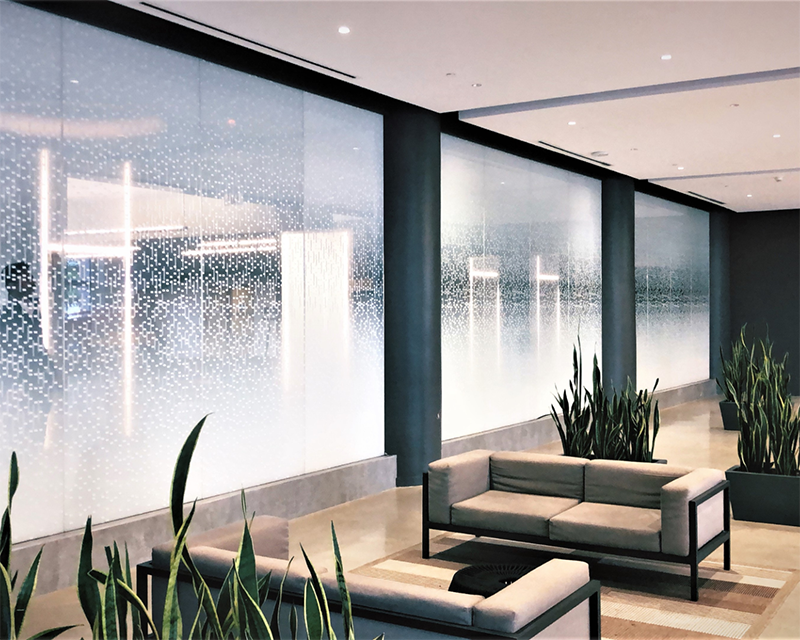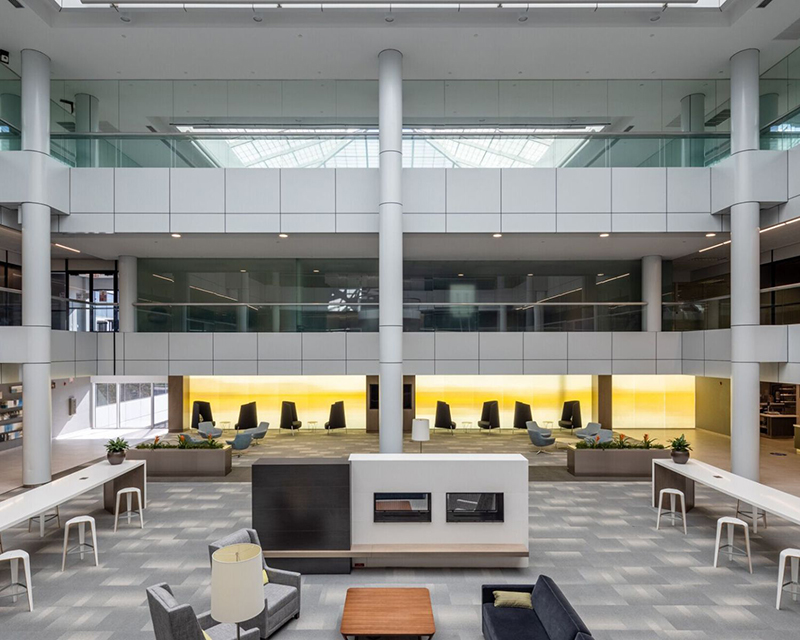Embracing Adaptive Reuse and Renovation
A Sustainable Shift in the Glass and Glazing Industry

In today's architectural and construction landscape, the concepts of adaptive reuse and renovation are gaining significant traction. Driven by a combination of environmental and societal factors combined with the uncertainty of the economy brings us to question how this will impact the glass and glazing industry.
Let's explore the essence of adaptive reuse and renovation, their contributions to sustainability efforts and how this shift offers tremendous opportunity for glass fabricators and glazing contractors alike.
Understanding Adaptive Reuse vs. Renovation
Adaptive reuse involves repurposing existing structures for new functions while preserving their potential historic or architectural significance. Unlike historic preservation, which seeks to restore a space to its original state, adaptive reuse focuses on renovating buildings past their prime to meet contemporary technological and social needs.
According to Gensler, embracing adaptive reuse is one of the most effective climate action strategies for creating sustainable cities.
While adaptive reuse and renovation projects are not limited to historic buildings, they do contribute significantly to sustainability. The National Trust for Historic Preservation notes that adaptive reuse not only safeguards cultural heritage but also minimizes waste and conserves resources compared to new construction.
Renovation, while less focused on preservation, aligns with sustainability principles by optimizing the use of existing materials and infrastructure.
Economic and Environmental Drivers
In the face of fluctuating interest rates and escalating construction costs, developers and property owners are increasingly seeking cost-effective alternatives to new builds. Moreover, mounting concerns about carbon emissions and environmental degradation have fueled a growing preference for sustainable building practices.
Adaptive reuse and renovation projects inherently embody these principles by minimizing material consumption, reducing energy demands, and rejuvenating urban spaces. By revitalizing existing structures, these projects help preserve embodied energy and mitigate greenhouse gas emissions associated with new construction.
McKinsey & Company reports that greenhouse gas emissions from the construction ecosystem are primarily driven by raw-material processing for buildings and infrastructure (about 30 percent of total construction emissions per year, largely cement and steel) and building operations (about 70 percent).
Implications for the Glazing Industry
As adaptive reuse and renovation gain momentum, the demand for innovative glass solutions is on the rise. From the standpoint of supporting LEED and sustainable building design, the glass industry offers more in the way of benefits. From a raw materials perspective, glass manufacturers are stepping up to the plate—as our industry always does—to reduce carbon emissions, keeping architectural glass at the forefront not only in improving energy efficiency, functionality, and, of course, the aesthetics of a building, but also in being an integral part of shaping urban environments.
Glazing contractors play a crucial role in transforming outdated structures into modern, energy-efficient spaces that meet the needs of today's occupants.
The Rise of Office and Residential Renovations

One notable trend in adaptive reuse is the conversion of abandoned retail facilities into vibrant office spaces and collaborative work environments. With the shift towards remote work and flexible schedules, companies are reimagining their office layouts to foster creativity, collaboration, and employee well-being.
Operable glass walls, partitions, and transparent elements play a pivotal role in creating open, flexible office layouts that promote communication and connectivity. In the residential sector, renovations driven by rising interest rates and evolving homeowner preferences present opportunities for glaziers to install high-end shower enclosures, energy-efficient windows, and decorative glass accents.
Glass Applications for Renovations and Adaptive Reuse
- Upgrading windows, storefronts and curtain walls with high-performing glass and glazing systems for improved energy efficiency and thermal insulation.
- Secondary glazing systems that overmount onto existing commercial windows, doors, storefront and curtain wall systems to improve energy efficiency.
- Installing dynamic glazing, either electrochromic or photochromic, to mitigate heat gain and reduce reliance on air conditioning.
- Incorporating decorative glass elements such as low volatile organic compound (VOC) back-painted glass and direct-to-glass printing for a modern aesthetic.
- Creating flexible interior spaces with operable glass walls, partitions, and glass railings to enhance natural light and spatial flow.
- The demand for daylighting combined with the ability to customize the level of privacy desired, has created an upward trend for satin etched, textured patterned and digitally imaged glass.
- Digital imaging on glass can be used to pay tribute to the historical nature of the original building, include a public art display, or to promote company culture—or corporate branding.
The growing emphasis on adaptive reuse and renovation signifies a shift in the construction industry towards sustainability and resource efficiency. For the glass and glazing industry, this trend translates into a wealth of opportunities to provide innovative glass solutions that blend form with function, all while contributing to a greener, more resilient built environment.


